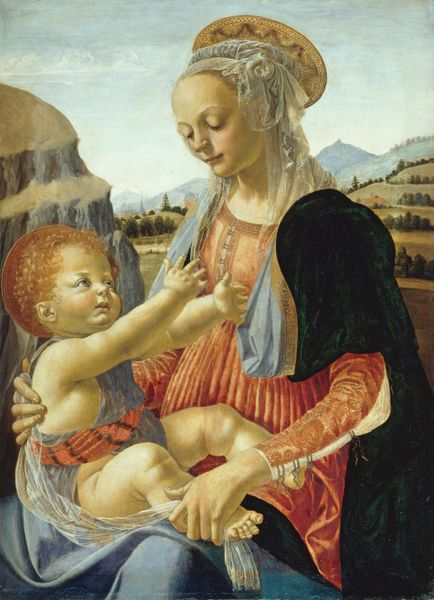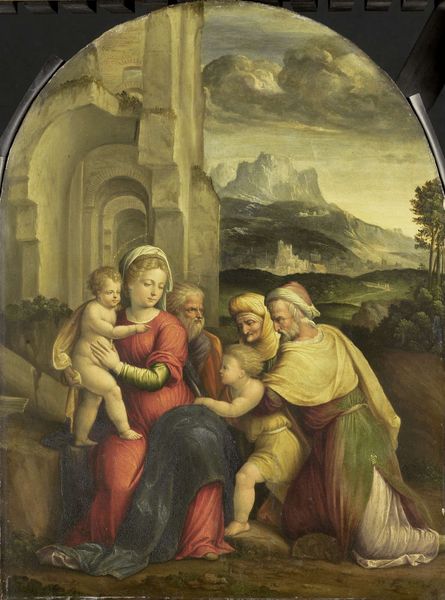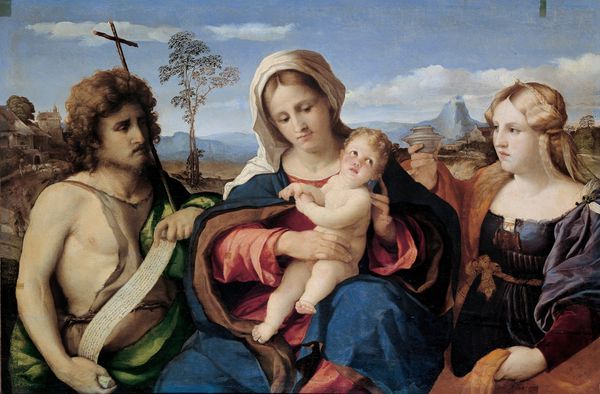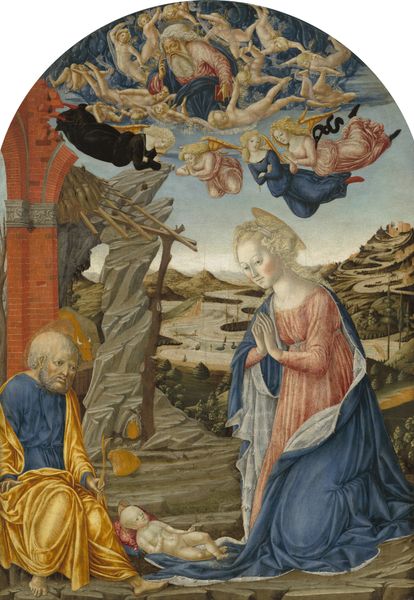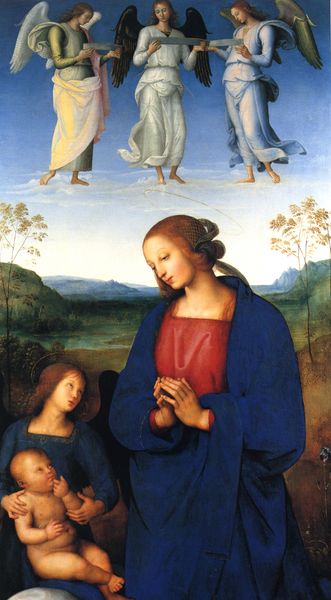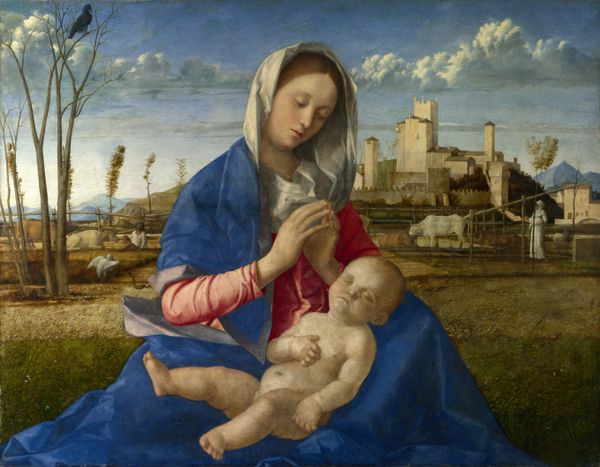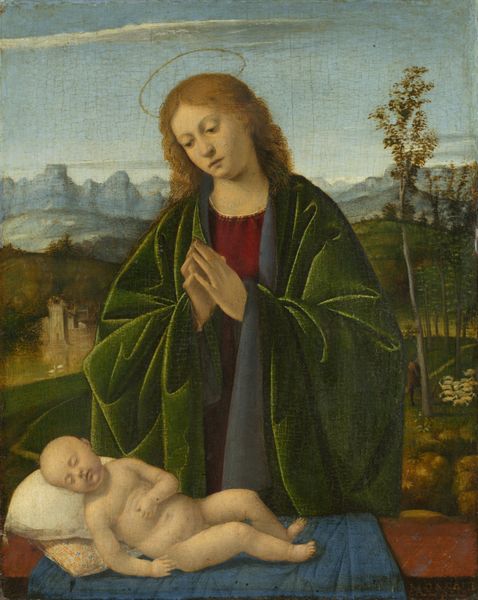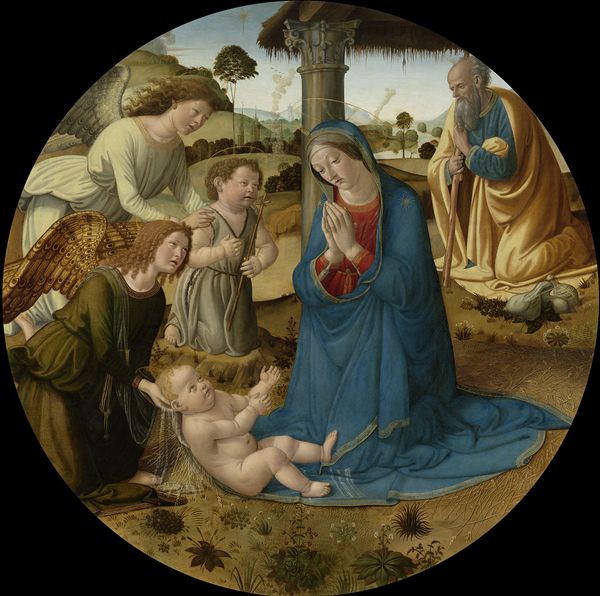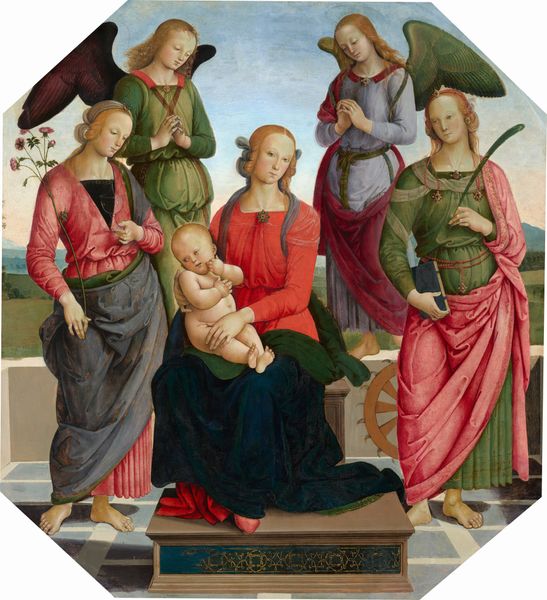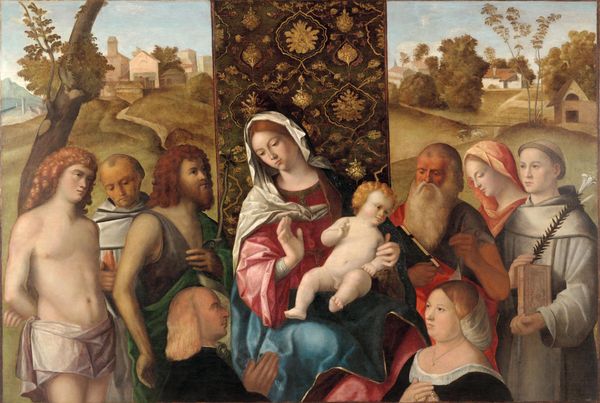
panel, tempera, painting, oil-paint
#
portrait
#
panel
#
allegory
#
narrative-art
#
tempera
#
painting
#
oil-paint
#
figuration
#
oil painting
#
history-painting
#
italian-renaissance
#
early-renaissance
#
portrait art
Dimensions: 52 × 47.2 cm (20 1/2 × 18 9/16 in.) Painted surface: 19 7/8 × 18 in. (50.5 × 45.7 cm)
Copyright: Public Domain
Curator: Welcome. Here we have Vincenzo Frediani's, "The Adoration of the Christ Child," created around 1490 using tempera and oil on panel. It currently resides here at the Art Institute of Chicago. Editor: My immediate impression is of a muted serenity, a tranquility emanating from the rather simple material application across the surface. The lack of lavish detail actually contributes to the intimate mood, wouldn’t you say? Curator: Indeed. The restrained palette emphasizes the work’s formal structure. Note how Frediani uses the pyramid configuration, anchoring the composition, drawing the eye upwards toward the vanishing point subtly placed in the distant landscape. Editor: And how much of that restraint comes down to workshop practices? Consider the standardization of panel preparation during this period. These Early Renaissance panels involved painstaking gesso layering by apprentices before an artist like Frediani even touched the thing! Curator: That context of collaborative creation absolutely informs our understanding of the finished object, yes, but let us also note how that pyramidal composition speaks to the Renaissance fascination with classical order. Mary at the apex…a potent visual strategy. Editor: A strategy born of communal craft practices. Also consider the sourcing of pigments, the trade routes for ultramarine, the local availability of ochres… it all impacts the visual outcome. Curator: True, materiality dictates, yet look closely at the subtle shifts in Mary’s blue drapery. See how it creates a visual counterpoint to the strong vertical of Joseph to the left. Formally speaking, the effect enhances the symbolic reading, her steadfast faith contrasted against earthly slumber. Editor: Agreed. And the sourcing and processing of these materials are never neutral activities. Think about the exploitation of land, and labour necessary. How that plays into religious commissions... that must figure into any complete consideration. Curator: I see your point. A dialectical relationship then, between form and the material conditions. Editor: Precisely. Considering both opens up new interpretive possibilities. Curator: Yes, it allows us to truly consider Frediani's masterwork beyond a simple, devotional scene. Editor: A convergence, wouldn't you agree?
Comments
No comments
Be the first to comment and join the conversation on the ultimate creative platform.


